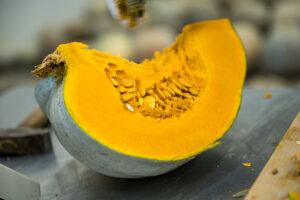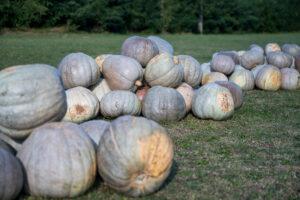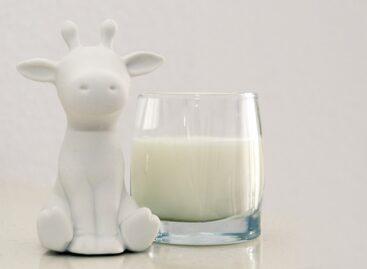Fall is here, pumpkin season is here
The increasingly popular autumn-winter delicacy among domestic consumers is not only delicious, but also a real vitamin bomb, and thanks to its rich carontinoid content, it is also widely used by the cosmetics industry to stop the aging of the skin. According to the overview of the National Chamber of Agriculture and the Hungarian Fruit and Vegetable Association, FruitVeB, one of the most widespread domestic varieties is the nagydobosi, which customers can find in a ready-to-cook state, cleaned and cut. At the same time, pumpkins should not be confused with decorative pumpkins used for making lanterns, because the latter are not suitable for consumption!

(Photo: NAK/Zsolt Lévai)
Even with the arrival of colder weather, there is no need to give up vitamin-rich, fresh Hungarian vegetables and fruits. The season of one of the Hungarians’ favorites falls on the autumn-winter period. According to the overview of the National Chamber of Agriculture and the Hungarian Fruit and Vegetable Association, FruitVeB, domestic pumpkin consumption has been steadily increasing for years, and thanks to the rich selection, everyone can find their favorite and tastiest pumpkin.
According to data from area-based subsidies, pumpkins are grown on around 1,626 hectares in Hungary, which means a slight increase compared to the previous year
The largest area is concentrated in the county of Szabolcs-Szatmár-Bereg, where pumpkins are cultivated on approximately 336 hectares, in the county of Csongrád-Csanád on 223 hectares, and in the county of Bács-Kiskun on almost 192 hectares. Domestic production ranges between 35,000 and 40,000 tons annually, which covers internal consumption. Thus, the amount of imports is negligible, in recent years the amount of pumpkins received from abroad was under a thousand tons. Overall, producers can’t complain about this year, the weather was favorable for pumpkins. Sufficient precipitation fell and the number of hours of sunshine was optimal, but the summer storms accompanied by hail caused serious damage in some places.
There are two types of pumpkin in the range
The giant pumpkin has a long growing season, the so-called winter pumpkin, its color is varied, its shape can be an elongated cylinder, oval, flattened, round, or heart-shaped. The color and thickness of the meat also varies. This species includes, for example, Nagydobosi, Muscade de Provance (Muscade pumpkin), and Hokkaido pumpkin, a version of giant pumpkins, which is adding color to the offerings of more and more shops and greengrocers. The so-called musk pumpkins are also popular, including the oblong, orange-colored Canadian pumpkin. Although its flesh is sweeter, unlike Nagydobosi pumpkin, it can be kept for a shorter time. The most common type of pumpkin in our country is the already mentioned Nagydobosi pumpkin, which was created as a result of the work of local producers and now appears as a specific local brand name and as a “symbol” of the people who live there. The production of the Nagydobos variety requires a great deal of care, starting with the cultivation of seedlings, ensuring an adequate nitrogen supply, pesticide-free care, determining the time and method of harvesting, right up to the selection of the product that ends up on the family’s table. Because the Nagydobos variety is constantly connected, not all pumpkins are ripe for harvest. When we hear from someone that they tasted a bad-tasting pumpkin, we can be almost certain that it was cooked from a crop grown with inappropriate production technology. Unfortunately, there is no reliable technique that can be used on the market and in the from the pumpkins available on store shelves, we can determine whether they have the expected flavor. In response to this problem, breeders developed the Téli Paráz variety, which also enjoys trademark protection by the National Office of Intellectual Property. The new variety has retained the taste of the old nagydobos, its outer gray and orange inner color. Its new features are high individual weight (10-18 kg), round shape, relatively unribbed surface, uniform meat thickness of 3-5 cm and an amber-colored seed. Brand protection ensures that only those who comply with the varietal use, production and selection regulations can use the Téli Paráz brand name, thereby guaranteeing its outstanding taste.

(Photo: NAK/Zsolt Lévai)
Many people are deterred from preparing pumpkin dishes by the considerable size of the pumpkin
On the one hand, it makes it difficult to prepare in the kitchen, and on the other hand, it is not certain that the customer wants to buy, take home and store a pumpkin weighing up to 10-18 kg at the same time. The good news is that you can now buy pumpkins in a ready-to-cook state, cleaned and cut. This not only saves housewives time, if they buy from a reliable producer and a recognized brand, they also save themselves from disappointment. Eating pumpkin is also of great importance for maintaining our health, as it contains many vitamins and minerals – calcium, zinc, manganese, iron, as well as vitamin C, vitamins A, B1, B2 and B6. Pumpkin is rich in alpha-carotene and beta-carotene, which the body converts into vitamin A (retinol). This is also the reason why the flesh color of winter squash (squash) ranges from yellow to orange. The deeper the orange shade, the higher the beta-carotene content of the pumpkin. Due to its rich carotenoid content, it is also widely used in the cosmetics industry. Thanks to its antioxidant effect, it protects the skin against oxidative damage and aging, and improves the stability and shelf life of cosmetics.
However, pumpkins should not be confused with pumpkins used to make lanterns, the so-called Halloween pumpkins
Although many people think that pumpkins are used for decoration, this is a misconception. Pumpkins have a sweet taste and a pleasant texture, but what greengrocers and supermarkets usually (but not always!) sell as Halloween pumpkins is biologically related to zucchini, butternut squash and asparagus. The latter are harvested for eating while still tender, but their fruit is hard and inedible when it is ripe – just as Halloween pumpkins are harvested. While large, orange pumpkins are also grown for food in America, an ornamental variety has spread in our country, so Halloween pumpkins available in stores and markets are not suitable for eating. This is also true for smaller ornamental pumpkins. The increasingly popular ornamental pumpkins available in flower shops, mostly used for decoration, are not suitable for eating. These varieties contain a lot of bitter substances (Cucurbitacin) and can be toxic if consumed in large quantities.
NAK
Related news
The Ministry of Agriculture is helping dairy farmers with a new tender
🎧 Hallgasd a cikket: Lejátszás Szünet Folytatás Leállítás Nyelv: Auto…
Read more >AM: Tax and administrative burdens for farmers to be reduced from January 1
🎧 Hallgasd a cikket: Lejátszás Szünet Folytatás Leállítás Nyelv: Auto…
Read more >The Ministry of Agriculture supports farmers’ awareness with as many tools as possible in 2026
🎧 Hallgasd a cikket: Lejátszás Szünet Folytatás Leállítás Nyelv: Auto…
Read more >Related news
Lidl is the main sponsor of Veganuár™ 2026: the year starts with new vegan products and discounts
🎧 Hallgasd a cikket: Lejátszás Szünet Folytatás Leállítás Nyelv: Auto…
Read more >Plastic packaging waste in the EU: 35.3kg/capita
🎧 Hallgasd a cikket: Lejátszás Szünet Folytatás Leállítás Nyelv: Auto…
Read more >Recent research: four out of ten Hungarians would try Veganuár
🎧 Hallgasd a cikket: Lejátszás Szünet Folytatás Leállítás Nyelv: Auto…
Read more >







